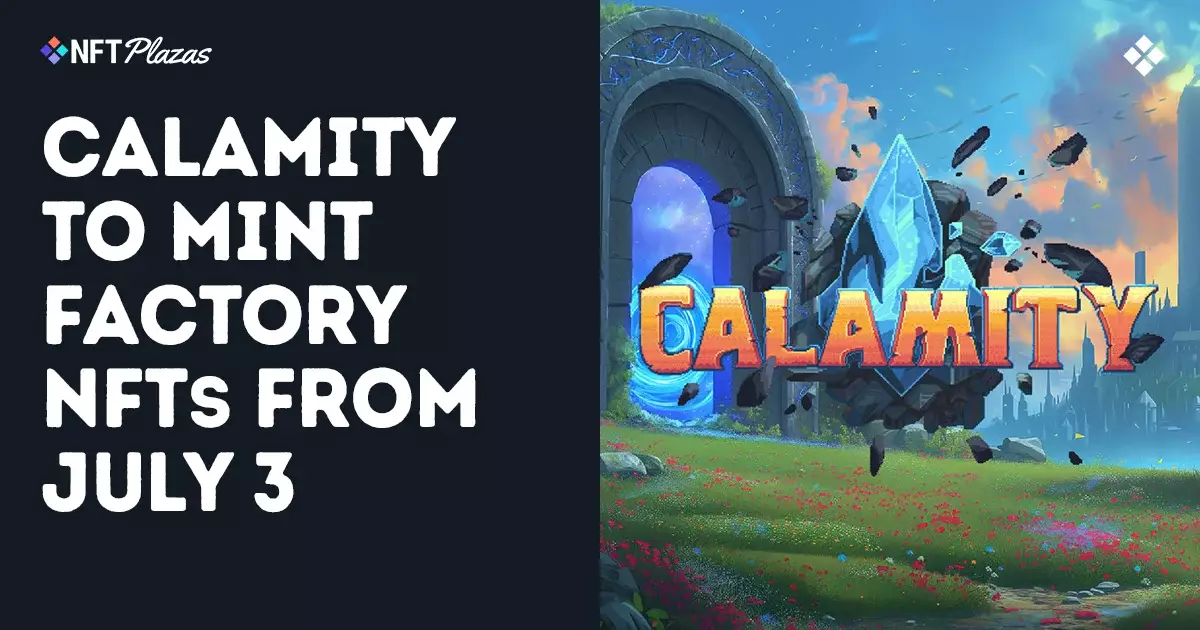Calamity, a blockchain-powered MMORPG, recently announced the July 3 launch of its Factory NFTs—digital assets propping up its upcoming $WYRM token economy. According to the developers, these NFTs grant holders “personal in-game space,” plus a suite of perks like unique mechanics, staking opportunities, and gameplay advantages. However, beneath this glossy facade lies a fundamental question that many NFT gaming projects dodge: Do these digital collectibles truly offer meaningful, lasting value, or are they simply a monetization scheme dressed in blockchain buzzwords?
While Calamity’s concept evokes classic MMOs such as Diablo and Albion Online—a welcome nostalgia trip for gamers—the analogy quickly fractures under closer scrutiny. The promise of “unique mechanics” tied to in-game land controlled by NFTs sounds alluring in theory, but in practice, it hinges heavily on speculative investments and continued user engagement. The blockchain community often touts ownership and scarcity, yet these factors alone don’t guarantee an engaging or sustainable gameplay experience. Instead, it risks commodifying gaming into a marketplace where digital property hoarding takes precedence over actual fun or meaningful progression.
Staking and Tokenomics: A Risky Bet on Play-to-Earn
Calamity’s Factory NFTs enable staking to earn the $WYRM token, reflecting a model now ubiquitous in Web3 gaming: play-to-earn. While this opens avenues for players to monetize time invested, the approach is double-edged. Early adopters might enjoy initial rewards, but token economies like $WYRM often suffer from inflationary pressures, token dumps, and volatile pricing—issues that can erode long-term incentives.
Merging NFTs to create higher-tier Factories for increased staking power is an intriguing mechanic, encouraging players to consolidate assets. Yet, this gamifies financial investment rather than traditional skill or creativity. It risks turning the game into a capital race, privileging those with deeper pockets rather than those with superior gameplay prowess. The social and competitive fabric of MMOs can fray when economics overshadow experience, contradicting the communal spirit that made traditional MMOs thrive.
Launch Timing and Accessibility: Potential Pitfalls
The Early Bird sale allocates 2,160 out of 9,999 Factory NFTs at $40 each, payable in USDT via Ronin or Ethereum. This price point and payment specification introduce two issues. Firstly, $40 may deter casual players unwilling or unable to front that cost merely to start engaging meaningfully. This creates a barrier-to-entry antithetical to inclusiveness and diversity in the player base. Secondly, emphasizing cryptocurrency payments excludes or intimidates less crypto-savvy individuals, a risky gambit for an MMORPG that ideally should welcome a broad audience.
Moreover, the scarcity of these NFTs—only around 10,000 units—will inevitably create an elite class of players “owning” significant portions of in-game land and advantages. While beloved games often include competitive elements, institutionalizing inequality through asset scarcity tied to real-world money risks alienating a large chunk of the community, hampering organic growth and longevity.
The Illusion of Ownership in a Centralized MMO
Calamity runs on the Ronin blockchain but is distributed via the Epic Games Store, a centralized platform overseen by a major corporate entity. This hybrid model complicates the touted advantage of NFTs: genuine ownership. Players might hold Factory NFTs, but their control is subject to Calamity’s servers, Epic’s policies, and ongoing developer support. Unlike blockchain assets that live fully decentralized, these NFTs’ value and utility are tethered to the game’s success and ongoing maintenance.
Additionally, the project’s roadmap heavily relies on future “reveals” to justify current purchases, a classic hallmark of hype-driven ventures. Players investing now do so with faith that the promised features—such as Expeditions, Automatas, and enhanced mechanics—will materialize and be worth the cost. This speculative foundation further accentuates the project’s positioning near the speculative edges of gaming and investing rather than a mature, player-first experience.
A Recalibration Is Needed in NFT Game Development
Calamity exemplifies a broader challenge in the NFT gaming space: how to balance innovative blockchain mechanics with genuinely compelling gameplay. While integrating NFTs and tokens can add layer and engagement potential, the predominant narrative remains worryingly aligned with “early bird” investments and staking rewards at the expense of fundamental game design.
Instead of aggressively pushing asset sales and tiered power upgrades, developers should focus on modular, accessible innovations, ensuring players feel growth comes from skill and choices, not financial leverage. Otherwise, projects run the risk of perpetuating elitism and instability that have plagued many play-to-earn ecosystems to date.
In essence, Calamity’s Factory NFT launch is emblematic of the NFT game industry’s current crossroads—between bold, player-oriented innovation and overhyped, economically gated experimentation. The path forward demands a pragmatic middle ground that respects both player experience and the disruptive potential of blockchain, steering clear of purely speculative motives cloaked in “utility.”

